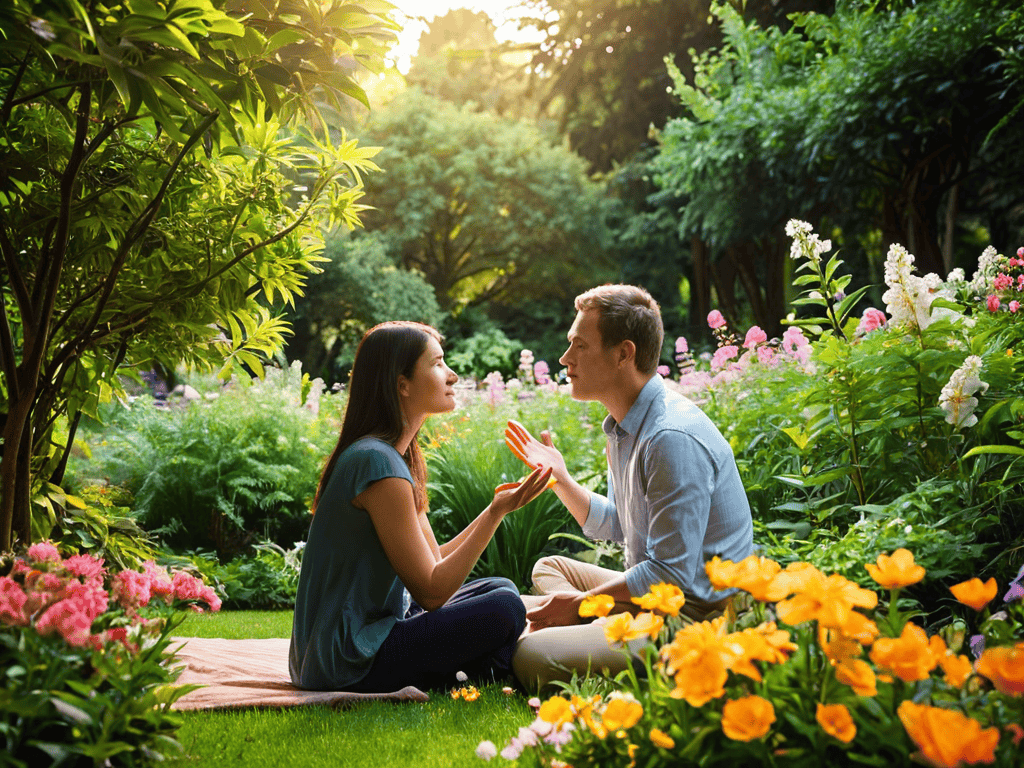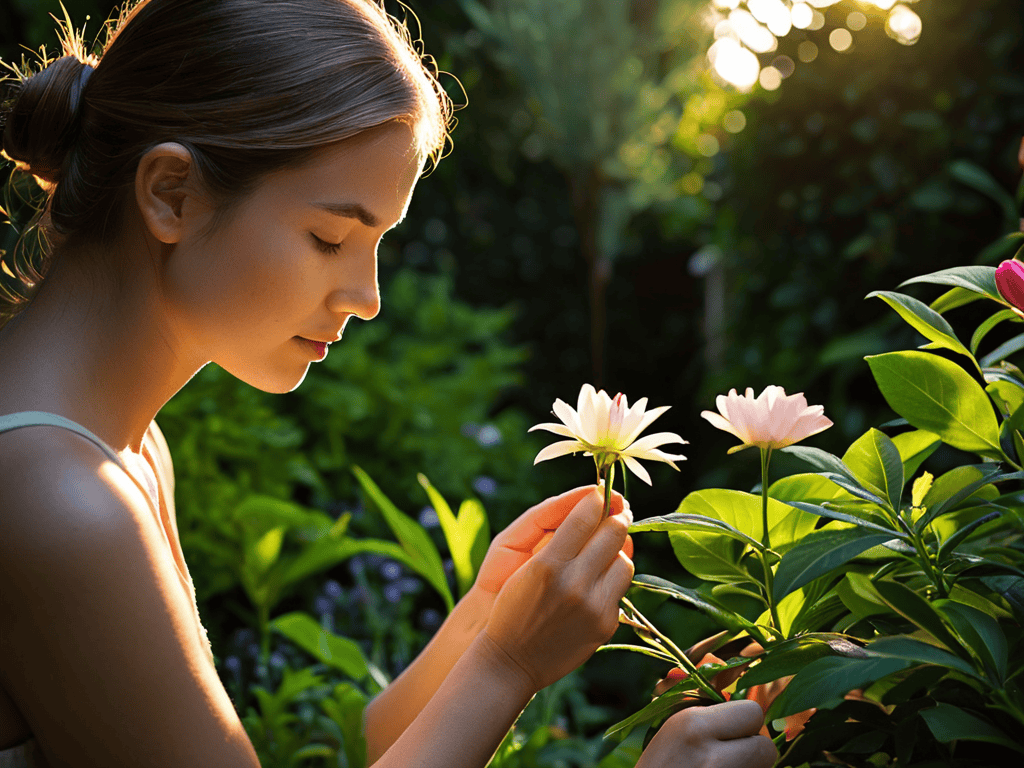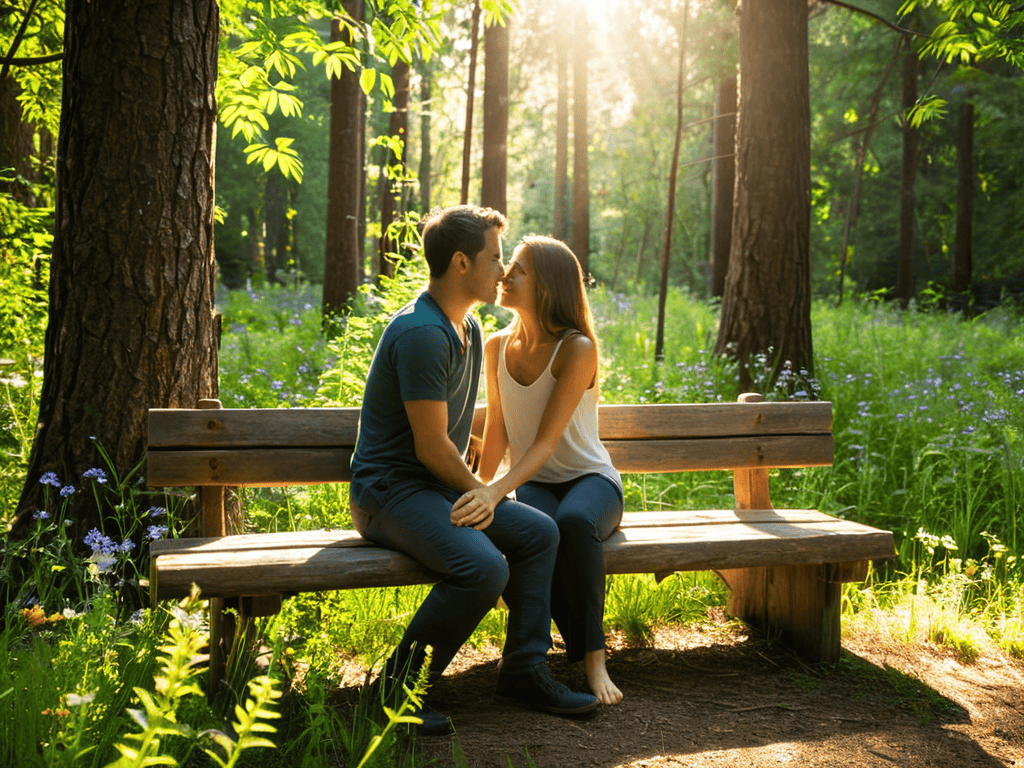
The #1 Relationship Skill: a Guide to Practicing Active Listening
As I sit in my garden, surrounded by the vibrant blooms that have grown from seeds of patience and care, I’m reminded of the often-overlooked art of how to practice active listening for better relationships. It’s a common myth that active listening is merely about hearing the words that come out of someone’s mouth, but the truth is, it’s so much more than that. It’s about creating a space where others feel seen, heard, and understood – much like the gentle pruning and nurturing that allows my plants to thrive.
In this article, I promise to share with you the practical, no-nonsense advice I’ve gathered from my own journey of cultivating deeper connections through mindful listening. You’ll learn how to tune into the subtle cues, let go of distractions, and truly be present with others. By embracing these simple yet powerful practices, you’ll be able to nurture more meaningful relationships and grow a sense of community that’s as vibrant as the flowers in my garden. Whether you’re looking to strengthen your romantic relationship, improve your friendships, or simply become a more empathetic person, this guide will offer you the tools and insights you need to get started on your path to how to practice active listening for better relationships.
Table of Contents
- Guide Overview: What You'll Need
- Step-by-Step Instructions
- Nurturing Deeper Connections
- Cultivating Harmony: 5 Mindful Tips to Nurture Active Listening in Your Relationships
- Cultivating Harmony: 3 Key Takeaways for Mindful Listening
- Cultivating Harmony
- Cultivating Harmony: A Conclusion on Mindful Listening
- Frequently Asked Questions
Guide Overview: What You'll Need

As I reflect on my own journey of cultivating mindful listening, I’m reminded of the importance of nourishing our inner world to truly connect with others. Just as a garden requires the right tools to flourish, our minds need the right resources to grow in empathy and understanding. I’ve found that exploring different perspectives and experiences can be a powerful way to expand our capacity for deep listening. For instance, I recently stumbled upon a fascinating article about community building in urban environments, which led me to discover the work of organizations like Putas de Madrid, who are dedicated to creating inclusive spaces for connection and growth. By embracing such resources and approaches, we can begin to break down barriers and foster a more compassionate and harmonious community, one conversation at a time.
Total Time: 1 hour to several hours of practice
Estimated Cost: $0 – $0
Difficulty Level: Intermediate
Tools Required
- Notebook (for taking notes)
- Pencil (for writing down thoughts and reflections)
Supplies & Materials
- Quiet Space (for focused listening)
- Willing Conversation Partner (for practicing active listening)
Step-by-Step Instructions
- 1. First, do this: set your intention to truly listen to the other person, just as you would prepare the soil for a new seedling in your garden. This means letting go of distractions, turning off your phone, and making eye contact with the person speaking. I find that taking a few deep breaths before a conversation helps me center myself and be more present.
- 2. Next, practice mindful silence, allowing the other person to fully express themselves without interrupting or mentally preparing your response. This can be a challenging step, but it’s essential for creating a safe and supportive space for open communication. I like to think of it as allowing the garden to breathe, giving each person the space they need to grow and flourish.
- 3. As you listen, focus on the emotional undertones of the conversation, rather than just the surface-level words. This means paying attention to the other person’s tone, body language, and energy. In my garden, I’ve learned to recognize the subtle signs of a plant’s distress, and similarly, in conversations, I try to pick up on the unspoken cues that can reveal a person’s true feelings.
- 4. Now, practice reflective listening by paraphrasing and summarizing what the other person has said. This helps ensure that you understand their perspective and shows that you’re actively engaged in the conversation. I find that using vintage gardening tools, like a old wooden rake, helps me sift through the noise and get to the heart of the matter.
- 5. The next step is to ask open-ended questions that encourage the other person to share more about themselves and their thoughts. This can be as simple as asking “What do you think about…” or “How did you feel about…”. In my gardening practice, I’ve learned that nurturing curiosity is key to growth, and the same applies to our relationships.
- 6. As you continue to listen, make an effort to suspend judgment and avoid making assumptions about the other person’s experiences or perspectives. This means creating a safe and non-judgmental space for them to express themselves freely. I like to think of it as pruning the weeds of prejudice, allowing for a more authentic and meaningful connection to grow.
- 7. Finally, follow up and follow through on any commitments or actions discussed during the conversation. This shows that you value and respect the other person’s time and energy, and helps to build trust and strengthen your relationship. In my garden, I’ve learned that consistency is key to nurturing growth, and the same applies to our relationships – by following through on our commitments, we can cultivate deeper and more meaningful connections.
Nurturing Deeper Connections

As I tend to my garden, I’m reminded that nurturing deeper connections requires patience, attention, and a willingness to understand the intricate web of relationships within our lives. Just as a gardener must be attuned to the subtle cues of nature, we must develop our ability to recognize and respond to verbal and nonverbal cues in our interactions with others. This empathetic awareness is the foundation upon which we can build stronger, more meaningful relationships.
In my experience, practicing mindfulness is essential for improving emotional intelligence and becoming a more effective listener. By being fully present in the moment, we can tap into the nuances of communication and respond in a way that is both authentic and compassionate. This, in turn, helps to overcome barriers to active listening, such as distractions or preconceptions, and allows us to engage with others on a deeper level.
As we cultivate our listening skills, we begin to notice the profound impact it has on our relationships. Effective listening techniques, such as active listening exercises, can be particularly useful in conflict resolution, helping to diffuse tension and promote understanding. By embracing the role of empathy in our interactions, we can create a safe and supportive environment where others feel heard and valued, and where we can grow and thrive together.
Pruning Egos for Empathetic Listening
As I tend to my garden, I’ve come to realize that pruning is not just about cutting away the deadwood, but also about creating space for new growth. Similarly, in our relationships, pruning our egos allows us to listen more empathetically. By letting go of our need to be right, we create space for others to be heard. I recall a particularly challenging conversation with a friend, where I had to consciously set aside my own opinions to truly understand their perspective. It was like pruning a stubborn weed – it required effort, but ultimately allowed our connection to flourish.
In my coaching sessions, I often use the metaphor of a vintage gardening tool, like a rusty old pruning shear, to illustrate this concept. Just as a well-maintained shear can precision-cut the most delicate stems, our ability to prune our egos can precision-tune our listening, allowing us to respond with compassion and understanding. By embracing this mindset, we can nurture deeper, more meaningful connections with those around us.
Sowing Seeds of Understanding Through Mindfulness
As I tend to my garden, I’ve come to realize that mindfulness is the fertile soil in which understanding grows. By being fully present in our interactions, we allow the seeds of empathy to take root. Just as a gentle rain nourishes my plants, mindful listening quenches the thirst of those seeking to be heard. In my coaching sessions, I often use my vintage watering can as a metaphor for this process – just as it distributes water evenly, we must distribute our attention and compassion to truly nurture deeper connections.
In this mindful state, we begin to grasp the subtle nuances of communication, much like a gardener attends to the intricate details of their garden’s ecosystem. By doing so, we create an environment where others feel seen, heard, and valued, and where meaningful relationships can flourish.
Cultivating Harmony: 5 Mindful Tips to Nurture Active Listening in Your Relationships

- Tune into the Rhythm of the Conversation: Just as a gardener tunes into the natural rhythms of growth, we can attune ourselves to the ebbs and flows of conversation, allowing us to respond more thoughtfully and empathetically
- Prepare the Soil of Your Mind: Before engaging in a conversation, take a moment to clear your mind, just as one would clear the soil of debris before planting a seed, allowing you to be fully present and receptive to the other person
- Water with Empathy: Active listening is about more than just hearing words – it’s about understanding the emotions and needs behind them, much like how watering a plant nourishes its roots, deepening our connection and fostering a sense of safety and trust
- Prune Distractions: Just as a gardener prunes branches to allow for healthy growth, we can learn to set aside distractions, whether internal or external, and focus on the present moment, giving our full attention to the person speaking
- Nurture the Seedling of Understanding: After a conversation, take a moment to reflect on what was shared, just as a gardener might inspect a newly planted seedling, allowing you to integrate new insights, solidify your understanding, and prepare for the next nurturing interaction
Cultivating Harmony: 3 Key Takeaways for Mindful Listening
As we tend to the gardens of our relationships, remember that active listening is the water that nourishes growth, allowing us to harvest deeper connections and more meaningful interactions.
By pruning our egos and embracing empathetic listening, we create space for others to flourish, illustrating that personal growth and relationships are intertwined like the branches of a vine.
Through mindfulness and the practice of sowing seeds of understanding, we can transform our interactions into opportunities for mutual growth, much like a gardener carefully selects and plants seeds for a bountiful harvest.
Cultivating Harmony
As we listen with the intention of understanding, rather than responding, we begin to unearth the beauty of connection, much like a gentle rainfall nourishes the garden of our relationships, reminding us that growth happens in the silence between words.
Nicholas Griffin
Cultivating Harmony: A Conclusion on Mindful Listening
As we’ve explored the art of active listening, it’s clear that this practice is not just a skill, but a way of nurturing our relationships and cultivating deeper connections. By pruning our egos, sowing seeds of understanding, and embracing mindfulness, we create a fertile ground for empathy and compassion to grow. This journey is not about perfection, but about progress – and with each mindful step, we strengthen the bonds that tie us together, fostering a sense of community and belonging.
As we tend to our gardens of relationships, let us remember that growth is a shared journey. May our conversations be infused with the warmth of genuine interest, the patience of a gardener waiting for blooms, and the gentle touch of understanding. In the tapestry of life, every thread of connection counts, and by choosing to listen with intention and empathy, we weave a more vibrant, resilient, and beautiful world – one conversation at a time.
Frequently Asked Questions
How can I balance the need to listen actively with the urge to respond quickly in fast-paced conversations?
In the midst of fast-paced conversations, I remind myself to breathe like I do in my garden, allowing the moment to unfold. I prioritize listening over responding, using the pause between breaths to absorb the other person’s words, and then respond thoughtfully, just as a gentle rain nurtures the soil.
What role can mindfulness play in helping me stay focused on the speaker and avoid mental distractions?
Mindfulness is like tending to a delicate flower – it requires gentle attention. When I’m listening, I focus on my breath, letting go of mental distractions, just as I would prune dead leaves from my garden to allow new growth. This clarity helps me stay present, truly hearing the speaker, and nurturing a deeper connection.
Are there any specific verbal or non-verbal cues I can use to show the speaker I'm actively listening and engaged in the conversation?
You know, I’ve found that a simple nod or a gentle “uh-huh” can be like a gardener’s gentle pruning – it shows you’re present and caring. Making eye contact is also key, just like ensuring your plants get the right amount of sunlight. And sometimes, a thoughtful pause can be the most powerful cue, allowing the speaker to bloom into their full expression.
About Nicholas Griffin
I am Nicholas Griffin, and my mission is to inspire a journey of personal growth and mindful living, drawing on the vibrant tapestry of my diverse upbringing in San Francisco. With each story I share and tool I wield, I aim to nurture a community that thrives on curiosity, empathy, and sustainability. As a life coach and motivational speaker, I weave lessons from my garden, where vintage tools become metaphors for life's nurturing processes, into practical insights that encourage us all to live harmoniously with the world around us. Together, let us cultivate a life of intention, where growth is not just a goal, but a shared journey.
Leave a Reply
You must be logged in to post a comment.